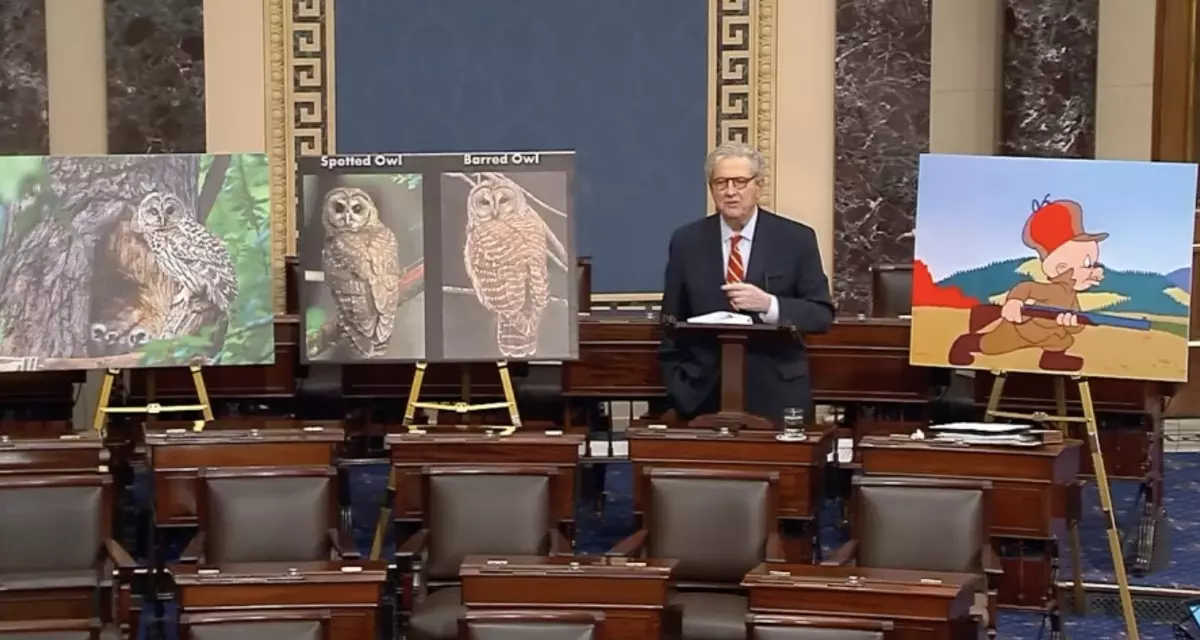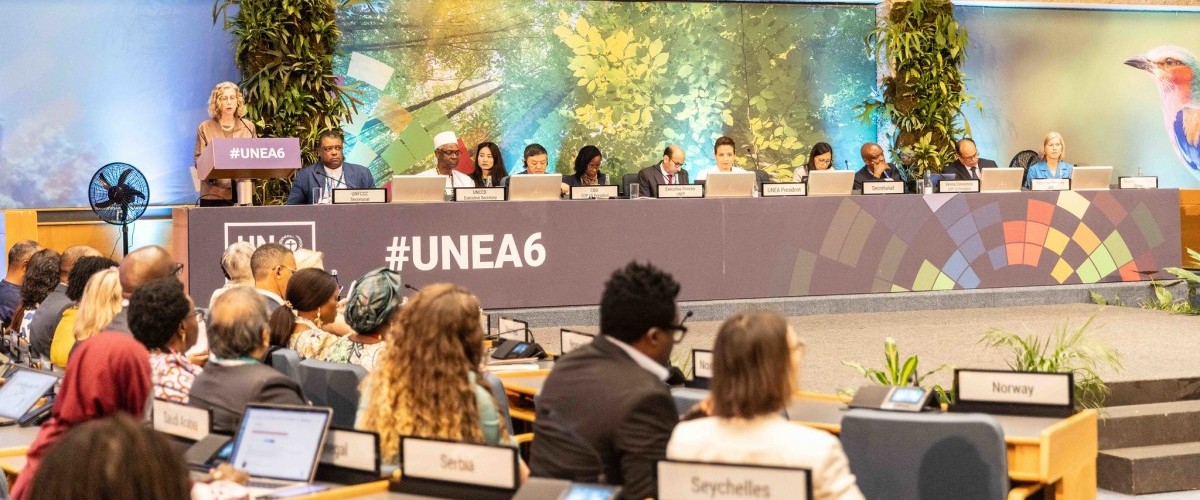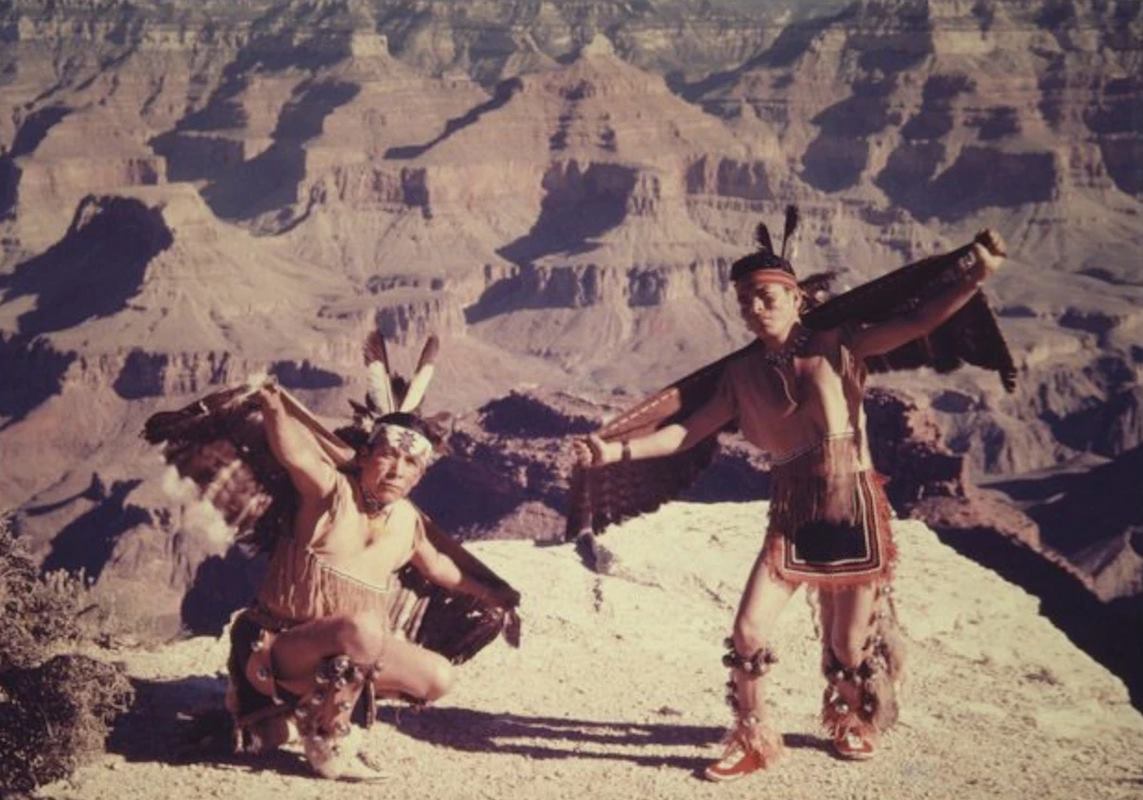Story at a glance…
-
A recent Senate vote failed to reject a Fish and Wildlife Service cull of up to 450,000 barred owls, the bird cull in history.
-
FWS say it’s the only chance to protect spotted owls from going extinct, which the barred owls outcompete.
-
Experts suggest it’s an unworkable, immoral plan that won’t help spotted owls at best, and a timber-industry plot at worst.
The US Fish and Wildlife Service is preparing to move forward with what one animal rights advocacy group is calling the “largest bird-of-prey cull in American history,” one that will see some 450,000 barred owls shot at a total cost of $1.35 billion to the taxpayer.
Entitled the Barred Owl Management Strategy, it attempts to justify the mass killing of this species protected under the Migratory Bird Treat by claiming it is an invasive, non-native species to the western United States, where it’s currently and outcompeting the smaller spotted owl species.
FWS’ Record of Decision (RoD) on the matter claims that if nothing is done—if no barred owls are killed—they will eventually lead to the extinction of the spotted owl across large parts of its range in the next 75 years.
“Due to the rapidity of the decline, it is critical that we manage barred owl populations to reduce their negative effect before northern spotted owls are extirpated from large portions of their native range,” the FWS said in the RoD, under a section marked “Purpose and Need”.
But some are not convinced that this inter-species conflict is what ails the spotted owls. and that practically and morally, the cull is an unworkable plan that will siphon off a truly stunning sum of money from other potential conservation uses. A bipartisan group of senators have introduced a joint resolution to reject the management plan, but a roll call vote last Friday failed 25-75 to bring the resolution to the floor.
“We talk a lot about over-reaching government, this is the definition of it,” says Wayne Pacelle, president of both Animal Wellness Action and Center for a Humane Economy, who is leading a coalition of 450 different scientific, environmental, and civic groups in opposition to the management plan.
“It’s a federal boondoggle, a waste of taxpayer money, it’s never going to work, and I think it’s ridiculous for the government in Washington DC to try and manage social relationships between two owl species—between two look-alike owl species,” he told WaL.
Mr. Pacelle is leading a lawsuit against the United States government on account of the management plan, but has long been aware of the proposal. He has brought it to the attention of dozens of experts, who aren’t convinced the massive cull will do anything the FWS seem to suggest it will.
Neither is he convinced that it has anything to do with spotted owls at all, but that instead, it’s a “bait and switch,”—a demonization of owls to open the doors to logging in old growth forests across the spotted owl range as part of provisions passed in President Trump’s omnibus spending bill.
“This is a smear effort by the timber industry,” says Pacelle. “These animals have been on the North American continent for thousands of years. Until the timber industry started this smear campaign and the environmentalists bought it, nobody thought any owl was bothering any other owl. It’s an attempt to create an outsider, to clear the way for exploitation of them”.
The timber industry would in theory stand to gain from the cull, since the accidental deaths of spotted owls would suddenly be able to be cleared from the criminal penalty which would normally be demanded according to the protections they enjoy under the Endangered Species Act. This is because spotted owls and barred owls look very similar, and despite the FWS’ shockingly precise estimates that 1 spotted owl per decade would be expected to be shot through mistaken identity, it’s difficult to tell them apart from a distance especially if the shooter isn’t bothered by the distinction.
This lack of protections would remove a significant financial and procedural deterrent that currently keeps some logging companies out of some of the unprotected old growth forests where the spotted owls now live. Barred owls would also in theory deter logging according to their protections under the Migratory Bird Treaty.
“Interior Secretary Burgum wants to vastly expand logging in spotted owl habitat, with Section 50301 of H.R. 1, the One Big Beautiful Bill Act, driving expanded timber cutting on federal lands—with the goal of increasing annual harvest from 3 billion board feet to 5 billion over the next eight years,” wrote Pacelle.
Native invasion
Can a native species also be invasive? The barred owl is native to North America, but its arrival west of the Great Plains is claimed in the RoD as being facilitated by westward colonial expansion. A suggestion that mass tree planting, concentration of prey species like mice around human habitation, and wildfire fighting has allowed the barred owl to move from the eastern regions to the west.
Several scientific papers WaL consulted remarked that the discussion on whether the barred owl could be considered non-native in the west is controversial and uncertain, and one paper from 2007 suggested it missed the elephant in the room entirely in trying to identify the cause of spotted owl declines.
“This invasion has confused the reasons behind recent spotted owl declines,” the paper, published by mostly government scientists, outlined in the introduction. What could be described as bullying by barred owls, the scientists state, is merely an exacerbation of massive spotted owl declines that followed logging of old growth forests and land development across their range.
Kent Livezey, a former FWS and Forest Service biologist and author of 14 peer-reviewed papers on barred and spotted owls, who is opposed to the management plan, references that some 112 birds native to parts of North America have undergone significant range expansion over the last 100 years, many of them much more than the barred owl. His letter to the Senate on the issue of the management plan outlines that barred owls were allowed to expand westward because of the actions of humans, true, but that they had been prohibited from expanding westward by another group of humans—namely the Native Americans who routinely cleared forest habitat to make room for grasslands.
Livezey doesn’t deny that barred owls are affecting spotted owl populations, but he does argue that shooting the former will not save the latter. Instead, he calls for identification and protection of old growth forest areas where spotted owls live and where they act as something of an ambassador for these rich and biodiverse ecosystems.
Cascade Daily News published a feature story on the barred owl management plan, in which its limitations are explored, as well as the quandary of what might be able to actually save the spotted owl from its larger, more versatile cousins. It referenced two massive interventions attempted by the FWS to change the course of certain species’ destinies, both of which failed spectacularly.

Opposition
Friday’s roll call vote is to be paired by a Congressional Review Act authorization in the House, but there is a time limit on it, and Pacelle thinks it’s unlikely.
“We’re not dead in the water, we have a federal lawsuit on this case in Portland that’s being consolidated with a second case that’s being brought by a different organization called Friends of Animals,” he told WaL on Saturday.
Both the CRA and the Senate Joint Resolution are supported by Senate Appropriates Committee member John Kennedy (R – LA) and Lisa Murkowski (R – AK) who chairs the Interior Appropriations Committee. Of the 25 votes in the Senate to advance the bill, about half were cast by the Republicans, but only 3 came from Democrats.
The democrats opposed in mass because “they don’t like the CRA as a tool,” Pacelle told WaL. “A number of members said they hate the idea of a barred owl kill but they’re opposing it on process. We only got 3 democrats Any vote on animals generally with Democrats would have won the vote [sic]”.
Additional opposition is found in state-level politics in the states that would host the barred owl killers, as well as from academia, where its scientific veracity and rigor are under scrutiny.
“USFWS is proposing a control program over 14 million acres, with much of it non-contiguous,” wrote Hilary S. Franz, Commissioner of Public Lands for the state of Washington. “There is no precedent for a successful wildlife-control program of this scale”.
Franz presented conservative estimations of the program’s cost as $235 million, which despite being less than half of what Pacelle’s estimations were, are nevertheless so substantial that the Commissioner feared the sum would interfere with the funding for other wildlife protection and management programs.
15,000 barred owls would be shot per year for 30 years under the plan, but many of the analyses of scientists canvased by Animal Wellness Action point out that there’s just no way to stop the owls from recolonizing areas where they’ve been eliminated.
“As soon as you stop, barred owls will be back, and you will be back to square one,” commented Oregon wildlife biologist Eric Forsman, who was described by Cascade Daily News as being “at the forefront of protecting the northern spotted owl for a half-century”.
“[T]he targeted area is far too vast for effective and sustained implementation,” wrote Dr. Alexandra Roulin, an internationally recognized owl specialist with over 40 years of experience at the University of Lausanne. “Without natural barriers, barred owls from adjacent regions will quickly recolonize the area, rendering the cull ineffective”.
“Virtually all occupied spotted owl territories include and are surrounded by many pairs of barred owls,” Livezey wrote. “If barred owls were shot in one area, other barred owls would move in and replace them. This kill plan would be a never ending, bloody game of Whack-A-Mole”.
“The plan calls for shooting barred owls in pockets across 24 million acres, but surrounding those pockets will be barred owls,” Pacelle said. Mating pairs kick their juvenile offspring out of their territory, which will naturally go to where there is less competition for food: namely, where they’ve previously been cleared from.
A philosophy of science
The concept that a native animal can also be invasive touches on a very blurred line of ethics between human and animal relations. There is virtually no ecosystem on Earth that hasn’t been altered by human civilization, and as Livezey argues, the fact that humans facilitated the barred owl’s expansion westward must be paired with the fact that its inability to do so alone was likely facilitated by humans as well.
Pacelle argues that the barred owls are simply undergoing range expansion over hundreds of years, and referenced animals moving across the Bearing Land Bridge as an example of this—one that shouldn’t be considered invasion.
“If a bald eagle moves 100 to 200 miles away from what some biologist at one point in time determined was the edge of their home range, does that mean they’re non-native?” Pacelle asked rhetorically.
In his letter, Livezey references his own research which identified 200 instances of birds worldwide undergoing range expansions that directly impacted species-of-concern, that this has happened in North America 111 times since 2010, and that 14 instances of this were even greater in scale than the barred owl’s move into Washington, Oregon, and California. Should biologists be attempting to confine all 111 of those birds to ranges that they once previously inhabited?
To Pacelle’s Bearing Land Bridge point, should the FWS attempt to eradicate species whose descendants crossed here from Asia, after whose arrival some native species will have almost certainly gone extinct?
It’s not as dramatic for Rocky Gutierrez, professor emeritus at the University of Minnesota, who told Cascade Daily News that it’s incorrect to suggest the FWS is trying to “play God”.
“Letting nature take its course will have one effect here: a species will go extinct and other species may similarly be impacted”.
We Humbly Ask For Your Support—Follow the link here to see all the ways, monetary and non-monetary.
PICTURED ABOVE: A northern spotted owl (left) and a larger barred owl (right). PC: Paul Bannick, released as a courtesy to Cascade Daily News.



